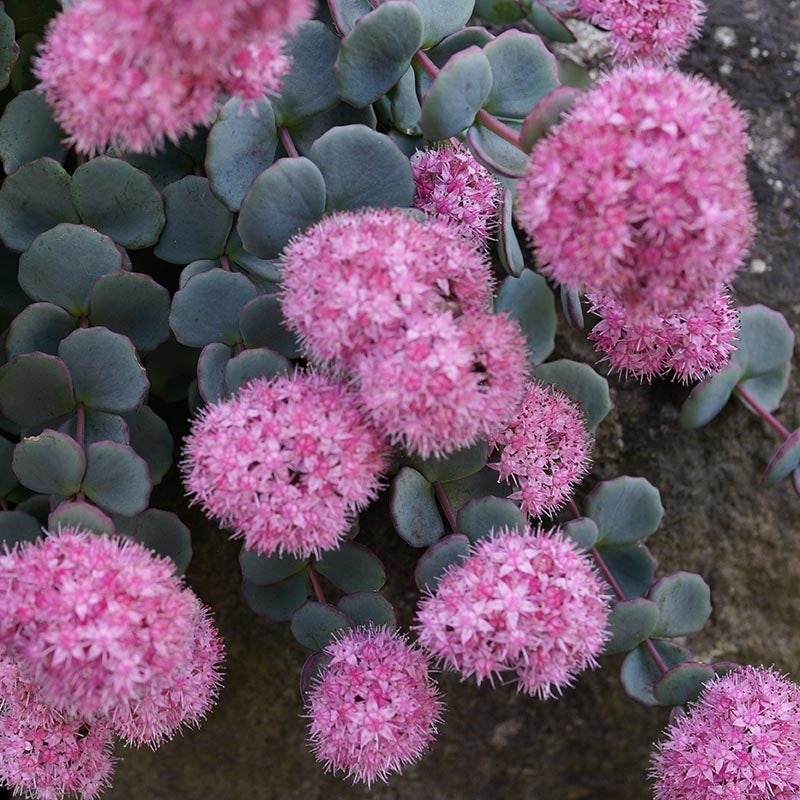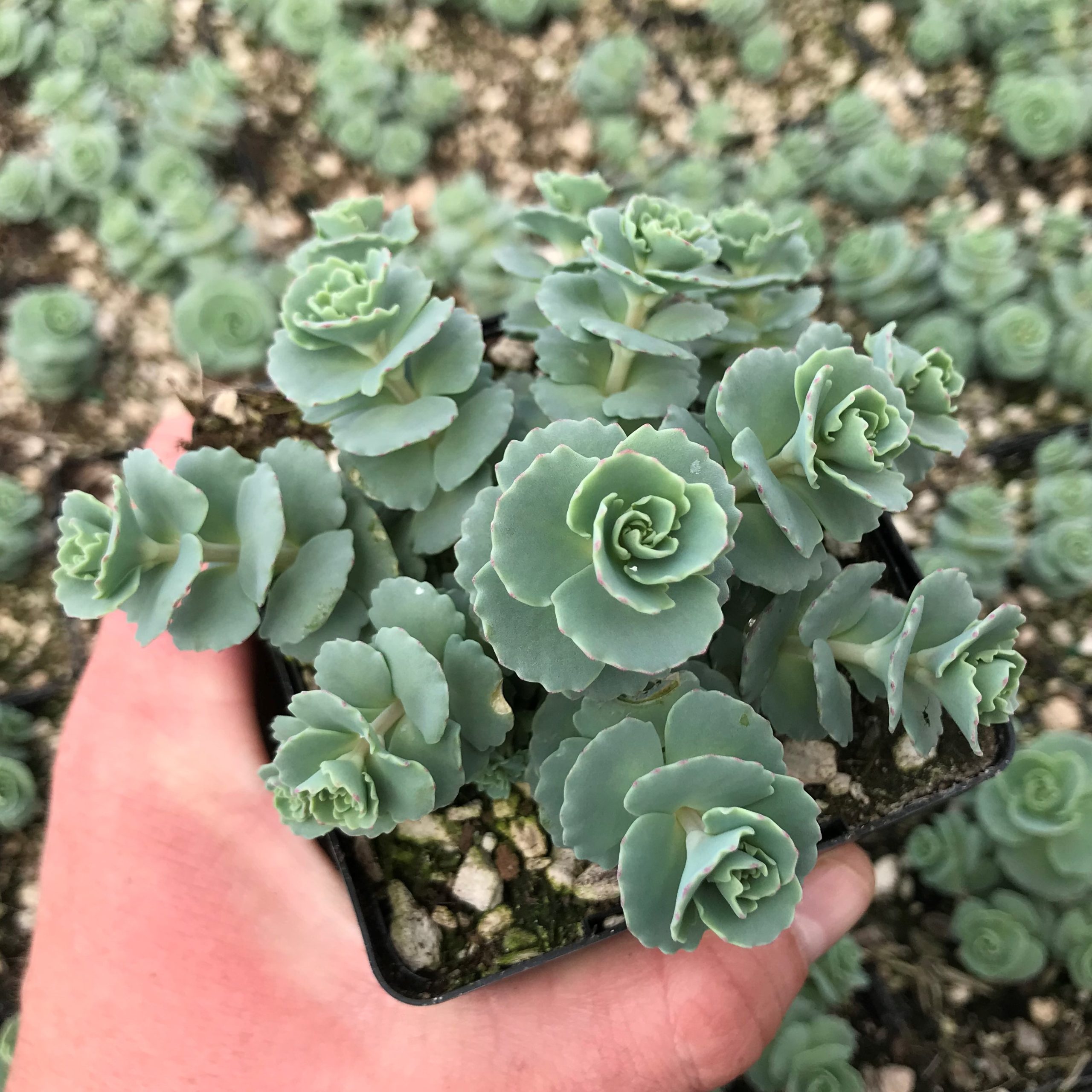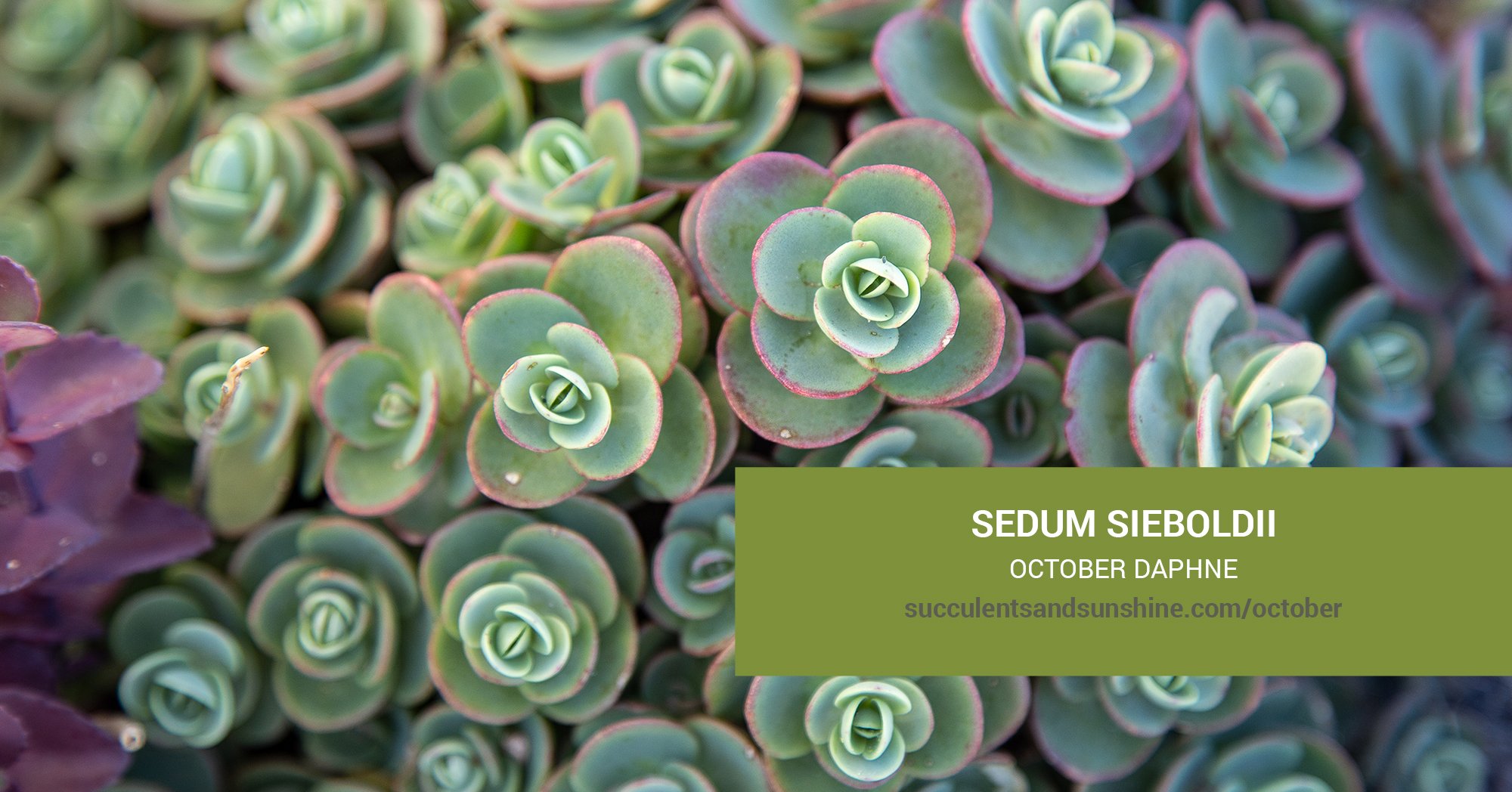This Sedum has vibrant green foliage that is edged with a shade of pink. It grows in an upright manner, then cascades over the edges of pots and other containers, and spreads out as a delightful ground cover if left to its own devices. During the late summer and early fall, it produces star-shaped blooms of pink that draw in bees and hummingbirds.
Table of Contents
Care and Propagation Information
Sedum sieboldii “October Daphne” is suitable for growing in containers or rock gardens, and even inside if you can find a spot with enough sunlight. However, the pink hue on the leaves may not be as prominent when grown indoors.
Watering
For Sedum sieboldii “October Daphne”, the ideal watering regime is the “soak and dry” process, wherein the soil is allowed to completely dry out before re-watering. This is the typical watering need for a succulent species.
Where to Plant
“October Daphne” is hardy in cold weather, bringing life and vibrancy to gardens in winter. It can survive temperatures as low as -20°F (-28.9°C) and grows well in places with full or partial sunlight.
How to Propagate Sedum sieboldii “October Daphne”
“October Daphne” Sedum sieboldii can be propagated through stem cuttings or by planting seeds.
Cuttings
To propagate “October Daphne” through cuttings, utilize a clean, sharp blade or scissors. Cut a stem off the mother plant and let the cut end dry and scab over for a few days before putting it into a pot of soil with good drainage. Make sure to only water the cutting when the soil is totally dry.
Seeds
To successfully grow “October Daphne” from seed, you need to make sure the temperature is warm, or you have a grow light and seed warmer. Plant seeds in a soil that drains well and keep it watered until the soil is dry. It may take several weeks, or longer, for the seeds to germinate, depending on the conditions in which you are growing.
Care and Propagation Information
General Care for Sedum sieboldii “October Daphne”
Watering
For Sedum sieboldii “October Daphne”, the ideal watering regime is the “soak and dry” process, wherein the soil is allowed to completely dry out before re-watering. This is the typical watering need for a succulent species.
Where to Plant
“October Daphne” is hardy in cold weather, bringing life and vibrancy to gardens in winter. It can survive temperatures as low as -20°F (-28.9°C) and grows well in places with full or partial sunlight.
How to Propagate Sedum sieboldii “October Daphne”
“October Daphne” Sedum sieboldii can be propagated through stem cuttings or by planting seeds.
Cuttings
To propagate “October Daphne” through cuttings, utilize a clean, sharp blade or scissors. Cut a stem off the mother plant and let the cut end dry and scab over for a few days before putting it into a pot of soil with good drainage. Make sure to only water the cutting when the soil is totally dry.
Seeds
To successfully grow “October Daphne” from seed, you need to make sure the temperature is warm, or you have a grow light and seed warmer. Plant seeds in a soil that drains well and keep it watered until the soil is dry. It may take several weeks, or longer, for the seeds to germinate, depending on the conditions in which you are growing.
FAQ
Is a Sedum a perennial or annual?
Permanent or lasting an extended period of time.
Should sedum be cut back for winter?
Prune plants to control growth, maintain their aesthetic appeal, or get rid of old flowers. Some gardeners prefer to leave the dried flower heads on the larger sedum varieties over winter, and prune them when new growth appears in the spring.
Does sedum sieboldii like sun or shade?
Sedum sieboldii prefers an environment with plenty of sunlight and soil that is neither too moist nor too dry and is well-drained. It is able to survive in dry conditions and can withstand coastal environments.
How do you care for October Daphne succulents?
For Sedum sieboldii “October Daphne”, the most effective way to water is to observe the “soak and dry” method, meaning that the soil should be allowed to dry out completely before being watered again. This is the usual watering requirement for a succulent.
Is sedum sieboldii a perennial?
Sedum sieboldii (October Daphne Stonecrop) is an incredibly diverse and multi-faceted perennial that offers something to admire in every season, from its low-growing and deciduous nature.



